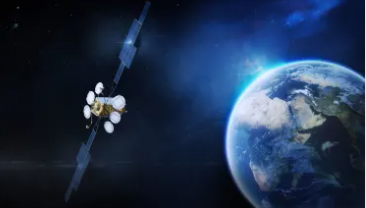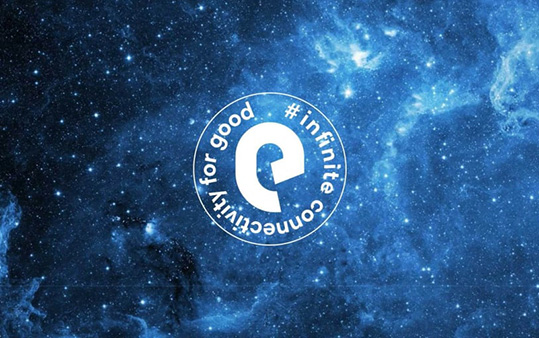Satellite meets the OTT distribution needs of broadcasters worldwide
Video consumption is a continually growing trend for TV viewers worldwide, with an increasing number of people watching video content on their mobile devices, including in less mature video markets. However, the challenge for broadcasters and channel owners is how to deliver a high-quality experience, irrespective of the available network. In some regions, the demand for multi-device viewing is growing faster than the capabilities that over-the-top (OTT) distribution can deliver - here’s why satellite broadcasting is in a great position to expand OTT distribution, for broadcasters wanting to reach audiences nationwide.
Delivering a quality experience
Broadcasters need to deliver quality video content to their audiences in any venue and on any device, but this is made difficult by the way the internet currently works in public places or in poorly connected homes. Latency issues, limited bandwidth and lack of affordable data packages are part of the challenge when it comes to providing a high quality video experience in these areas.
A key element to overcoming this is in defining the right distribution technology to reach end-users on their terms: anytime, anywhere and on any device. For broadcasters, this is both an opportunity and a threat. Those who are able to offer a reliable, high-quality viewing experience will quickly and continually be able to seize the worldwide market of viewers. However, this brings with it its own challenges - particularly one of bandwidth and provision.
Let’s examine these challenges in greater detail.
The limits of OTT distribution services
Scalability
OTT content is distributed via unicast, giving each viewer a tailored IP stream. Therefore, the more people that use an OTT service, the more bandwidth is needed to deliver the channel to everyone in the content delivery network (CDN). Offering continuous high-quality live streaming with a level of reliability sufficient to reach millions of receivers with unparalleled consistency, is not currently optimal for the OTT industry as Internet Service Providers are often unable to make enough bandwidth available for this purpose. Therefore, there is a high risk of congestion of terrestrial networks, particularly during peak hours and for highly watched content such as sports events or popular TV shows. In Italy, for example, when a sports streaming service started streaming live football matches last year, streaming capacity problems led to a string of technical outages interrupting several matches.
Cost
As CDN distribution costs rise in-line with audience growth, above a certain point, it would become more expensive than satellite, making the prospect for high-quality live streaming unviable for a large pay-TV platform.
Reach
Depending on the location, terrestrial broadband is not always able to deliver HD quality to match this demand. An HD service distributed by OTT in Europe today requires approximately 700 Gigabytes per month per household and requires a sustainable peak rate of 20 Mbps per household. Fibre penetration is progressing, but it’s far from reaching all households, even in Europe, and even in 2026[1].

Due to economical and geographical reasons, service areas of terrestrial networks cannot usually reach 100% coverage of the globe. For areas with very low-density population, terrestrial communication networks would result in a high average cost per person. For mountainous regions, or regions with challenging terrain, it is also difficult to deploy the infrastructure required for these networks to function.
How satellite broadcasting helps
Satellite may be one of the only viable solutions to complement OTT and match the ever-rising demand for high-quality content viewing, both nationwide and across wide regions. Indeed, in a recent survey of leading content creators, broadcasters and distributors[2] respondents felt that the industry would evolve towards a hybrid approach with linear broadcasting coexisting with VoD content and streaming services.
Universal coverage
Demand for high quality content doesn’t simply come from areas with good terrestrial coverage. There is significant demand from viewers in areas that do not have sufficient terrestrial network support. Satellite broadcasting enables you to reach these areas and provide services that are in high demand. It’s the ideal channel for wide-scale distribution.
Unlike terrestrial-based solutions, satellite distribution does not need extensive local infrastructure to operate. Offering all the benefits of a point-to-multipoint solution, the network is easy to set up and satellite’s wide footprints cover any area near-instantaneously, delivering content across vast regions, with no gaps. Eutelsat’s fleet of global satellites is able to reach 99% of the world’s population. Now, you can harness this technology to make ubiquitous, consistent coverage a challenge of the past.
Cost-effective and reliable
There is no limit to the scalability of satellite reception and related costs do not depend on the size or behaviour of the audience. As your audience increases, your transmission costs do not. At a certain threshold satellite becomes more cost-efficient than terrestrial networks in the long run.
Moreover, end-users can expect a high level of reliability in any location, particularly with popular content such as live sports, without the risk of bottlenecks. Satellite bandwidth is entirely dedicated to the video service, and there’s no limit to the number of HD or Ultra HD channels that can be broadcast.
Broaden your OTT distribution's horizons and extend your reach
Satellite distribution is a strategically sound option for broadcasters seeking a long-term solution to extend their reach and access the rapidly growing markets around the world. The growing expectations for OTT services don’t hinder the value of satellite broadcasting, especially in regions where very high broadband internet access is not a reality, or for channels that require distribution in multiple markets and those with large audiences. Satellite broadcasting and OTT will continue to coexist for many years to come.
The future will see the two solutions complementing each other to reach entire target markets, and thereby strengthening the value proposition for end customers.
Contact Eutelsat and capitalise on this global expanding opportunity, today.
[1] Idate FTTH Forecast for Europe / Market forecast 2021-2026 / FTTH Virtual Conference 2021
[2] 2022 Secure Streaming & Broadcast Workflows Report, by Streaming Media, Intertrust, and the Help Me Stream Research Foundation



